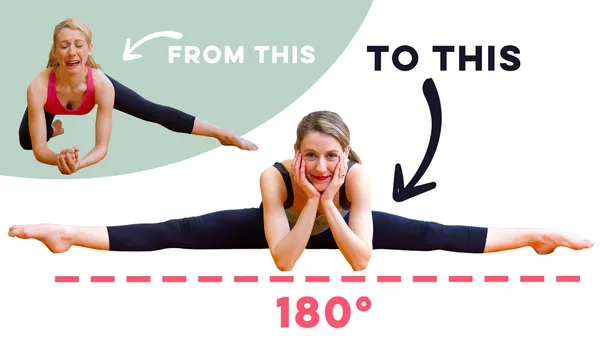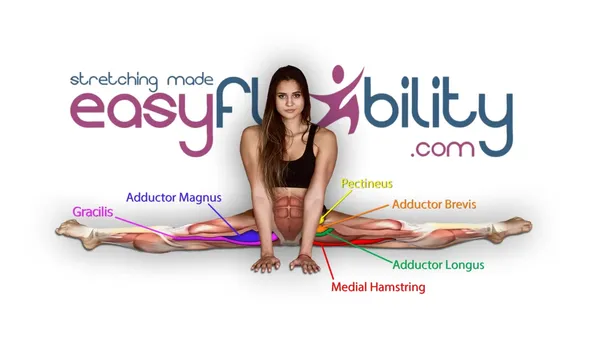Table of Contents
Embark on an exciting journey to learn How to do a split, a sought-after flexibility milestone that showcases physical prowess and grace. Kick-start your journey with this comprehensive guide from Kizworld, tailored to lead you through the process with clarity and effectiveness. Discover the importance of flexibility, proven methods to reach a full split, and the significance of pre-split warmup exercises. Gain insights into the benefits of this remarkable feat and avoid common pitfalls that can hinder your progress. This article also unveils inspiring individuals who have made the split their signature move, leaving audiences in awe.
How to Do a Split: A Comprehensive Guide to Mastering the Splits
I. Importance of Stretching Before Doing Splits - Stay injury-free
Warm Up Beforehand:
Minimize injury risk by warming up with light cardio and dynamic stretches. A brisk walk or jumping jacks can elevate your heart rate, while leg swings and torso twists enhance flexibility.
Stretching Type | Benefits | Examples |
|---|---|---|
Dynamic Stretches | Activate muscles and increase range of motion | Leg swings, torso twists, walking lunges |
Static Stretches | Lengthen and relax muscles | Seated toe touch, quad stretch, butterfly stretch |
Focus on Split-Specific Muscles:
Target the hamstrings, quadriceps, and hip flexors. Hold each stretch for 30 seconds to a minute, repeating 2-3 times per side.
- Hamstrings: Sit on the floor with one leg extended and the other bent, reaching towards your toes.
- Quadriceps: Stand facing a wall, placing one leg behind you and bending your front knee, pushing your hips forward.
- Hip Flexors: Kneel on one knee, placing the other foot in front, and lean forward, keeping your back straight.
II. Essential Steps of the Front Splits - Breakdown of the process
Essential Steps of the Front Splits - Breakdown of the process
Achieving a full front split requires dedication and a step-by-step approach. Here's a breakdown of the process to help you progress safely and effectively:
1. Warm-Up and Stretching:
Begin with a dynamic warm-up to prepare your muscles for stretching. Incorporate exercises like leg swings, knee hugs, and torso twists. Follow this with static stretches, holding each stretch for 20-30 seconds, focusing on your hamstrings, quadriceps, and inner thighs. Read more about improving flexibility with gymnastics
2. Start with Preparatory Exercises:
Before attempting the full split, start with preparatory exercises to build strength and flexibility in your legs and hips. These include exercises like standing quadriceps stretches, seated butterfly stretches, and single-leg bridges. Discover more core strengthening exercises in gymnastics
3. Practice the Half Split:
Begin with the half split, which is a halfway point to the full split. Start by sitting on the floor with your legs extended in front of you. Bend one knee and bring your foot towards your groin, keeping your other leg straight. Hold this position for a few seconds and then switch legs. Learn more about mastering basic gymnastics skills
4. Progress to the Full Split:
Once you can comfortably hold the half split, gradually work towards the full split. Start by holding the half split for longer durations, then slowly begin to straighten your back leg. Keep your core engaged and avoid arching your back. Explore the world of gymnastics competitions
5. Incorporate Dynamic Stretching:
In addition to static stretching, incorporate dynamic stretching exercises into your routine. These exercises involve controlled movements that help improve your range of motion and flexibility. Examples include leg swings, hip circles, and quadriceps stretches with movement. Get inspired by the most famous gymnasts
6. Maintain Proper Form:
Throughout your split training, maintain proper form to avoid injury. Keep your back straight, core engaged, and knees aligned with your toes. Avoid bouncing or forcing your body into the split. Train like a gymnast with these tips
7. Listen to Your Body:
Pay attention to your body's signals during your split training. If you experience sharp pain, stop immediately and consult a healthcare professional. Respect your body's limits and avoid pushing yourself too hard, too soon. Explore the best gymnastics apps and websites
Improved Flexibility | Enhanced Range of Motion | Reduced Risk of Injury |
Increased Mobility | Improved Balance and Coordination | Boosted Athletic Performance |
Remember, achieving a full split takes time and consistency. Be patient with yourself and celebrate your progress along the way. With dedication and the right approach, you'll be able to master the front split and enjoy its numerous benefits.
III. How to Make a Split Look More Graceful - Improving Technique
How to Make a Split Look More Graceful - Improving Technique
Achieving a split is a remarkable feat, but adding grace to your execution elevates it to an art form. Here are some tips to enhance the aesthetics of your split:
- Master the Basics: Before attempting to refine your technique, ensure you have a solid foundation in the fundamental split position. This includes proper alignment, flexibility, and balance.
- Focus on Flexibility: Flexibility is key to achieving a graceful split. Incorporate regular stretching and flexibility exercises into your routine to improve your range of motion and prevent muscle tightness.
Check out our guide on How to Improve Your Flexibility and Mobility with Gymnastics for effective stretching techniques.
- Engage Your Core: A strong core is essential for maintaining stability and control during a split. Engage your core muscles to keep your body aligned and prevent excessive arching or swaying.
- Control Your Descent: When entering the split, maintain a slow and controlled descent. Avoid dropping into the position abruptly, as this can strain your muscles and compromise your form.
Refer to our article on How to Do a Split for a step-by-step guide to achieving the perfect split.
- Pay Attention to Your Lines: A graceful split showcases clean and precise lines. Ensure your legs are straight, your toes are pointed, and your body forms a straight line from head to toe.
- Hold the Position: Once you've reached the split, hold the position for a few seconds to demonstrate your control and flexibility. Avoid bouncing or shifting your weight, as this can disrupt the flow of your movement.
Discover more tips on The Benefits of Practising the Split to enhance your overall flexibility and mobility.
- Practice Regularly: Consistency is key to improving your split technique. Regular practice allows your body to adapt and progress, leading to more graceful and effortless splits.
- Seek Feedback: Ask a coach, instructor, or experienced friend to observe your split and provide constructive feedback. Their insights can help you identify areas for improvement and refine your technique.
Explore our article on Common Mistakes to Avoid when performing the split to ensure you're on the right track.
Mistake | Correction |
Bending Your Knees | Keep your legs straight and toes pointed. |
Arching Your Back | Engage your core and maintain a flat back. |
Shifting Your Weight | Distribute your weight evenly between both legs. |
With dedication, patience, and the right techniques, you can achieve a graceful and aesthetically pleasing split that showcases your flexibility and control.
IV. Dedication and Gradual Improvement - Reaching Your Splitting Goals
Dedication and Gradual Improvement - Reaching Your Splitting Goals
Achieving a full split requires dedication and gradual improvement. Start with simple stretches and gradually increase the intensity and duration of your sessions. Consistency is key, so make stretching a part of your daily routine. Patience is also essential, as it may take weeks or even months to achieve your desired flexibility. Don't get discouraged if you don't see results immediately; keep practicing and you will eventually reach your goal. How to Do a Handstand
To stay motivated, set realistic goals and track your progress. Celebrate your achievements, no matter how small, and don't compare yourself to others. Everyone's body is different, so focus on your own journey and enjoy the process of improving your flexibility. The Benefits of Gymnastics for Kids
Exercise | How to | Benefits |
Butterfly Stretch | Sit on the floor with the soles of your feet together and your knees bent. Gently push your knees down towards the floor. | Stretches the inner thighs and groin muscles. |
Quad Stretch | Stand with your feet shoulder-width apart. Step forward with one leg and bend your knee so that your thigh is parallel to the floor. Keep your back straight and your heel on the ground. | Stretches the quadriceps muscles on the front of your thighs. |
Hamstring Stretch | Lie on your back with one leg extended and the other bent. Gently pull your extended leg towards your body using a towel or strap. | Stretches the hamstring muscles on the back of your thighs. |
Remember, warming up before stretching is essential to prevent injury. Start with a few minutes of light cardio, such as walking or jogging, to get your blood flowing. Then, perform some dynamic stretches, such as leg swings and arm circles, to prepare your muscles for the more intense static stretches. The Best Gymnastics Equipment for Home Use
After stretching, cool down with some gentle exercises, such as walking or yoga, to help your muscles recover. Stay hydrated by drinking plenty of water throughout the day, as this will help to improve your flexibility. How to Improve Your Flexibility and Mobility with Gymnastics
V. Conclusion
With dedication, consistency, and the right approach, achieving a split is a realistic goal for anyone seeking to enhance their flexibility and physical prowess. Remember to prioritize proper warm-up exercises, maintain a balanced diet, and listen to your body's signals to avoid injuries. Embrace the journey, celebrate your progress, and relish the sense of accomplishment as you gracefully sink into a full split. May this guide from kizworld empower you to unlock your flexibility potential and inspire you to explore new possibilities in your fitness journey.